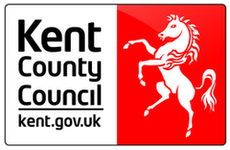Archaeological Survey of Mineral Extraction Sites around the Thames Estuary
Essex County Council, Kent County Council, 2007. (updated 2011) https://doi.org/10.5284/1000016. How to cite using this DOI
Data copyright © Essex County Council, Kent County Council unless otherwise stated
This work is licensed under the ADS Terms of Use and Access.
Primary contact
Ellen
Heppell
Project Officer
Essex County Council Field Archaeology Unit
Fairfield Court
Fairfield Road
Braintree
CM7 3YQ
Tel: 01376 331431
Resource identifiers
- ADS Collection: 774
- ALSF Project Number: 3374
- DOI:https://doi.org/10.5284/1000016
- How to cite using this DOI
Overview
The Archaeological Survey of Mineral Extraction Sites Around the Thames Estuary was a joint venture between Essex and Kent County Councils, funded by the Aggregates Levy Sustainability Fund (administered by English Heritage). The project concentrated on an area around Grays and Thurrock (Essex) and Dartford and Gravesend (Kent). This area has been established as one of the most significant in terms of Pleistocene deposits and early homind activity. This survey collated a large amount of data about these topics to help informed decision making in this important area. The main results of the survey are a series of GIS layers with detailed attribute data. These are supported by an assessment report which provides method statements, background information and specialist reports (ECC and KCC 2004).
The digital archive
The digital archive currently consists of the following resources:
Project Report
- Essex County Council and Kent County Council 2004: Archaeological Survey of Mineral Extraction Sites in the Greater Thames Estuary. Aggregates Levy Sustainability Fund 1 Assessment Report (Unpublished).
- O'Connor, T. and Heppell, E.M. 2006: A Users Guide to the Archaeological Survey of Mineral Extraction Sites around the Thames Estuary. Aggregates Levy Sustainability Fund 2 Summary Guide (Unpublished).
The main project report is accompanied by all figures, tables and appendices.
Project GIS
The archaeological survey of mineral extraction sites around the Thames Estuary was conceived as a largely GIS based project, with a series of digital map layers forming a key output of the project. These layers were used to address the aims and objectives of this project.
GIS layers relating to the general geology of the area were provided by the British Geological Survey. Their data on 'artificial ground' formed the basis of the other layers. Geology, Palaeolithic and industrial archaeology specialists compiled their data, which was then passed on to the appropriate HER/SMR officer to digitise or append to the polygon data.
A full description of the GIS dataset can be found in the Summary Guide and Data Catalogue.
Non-digital Archive and Publications
In addition to the above, the Archaeological Survey of Mineral Extraction Sites around the Thames Estuary project also produced the following outputs:
| Lectures / Academic Papers |
|---|
| English Heritage ALSF Seminar: Current work on the Palaeolithic and Pleistocene. Peterborough Museum, March 2006 |
| Essex Archaeological Symposium, October 2006 |
| Meetings / Technical Forums |
| ALGAO East of England 2005 |
The Archaeology Data Service (ADS) do not hold any further information regarding these non-digital outputs, any queries should be directed to the depositor.








